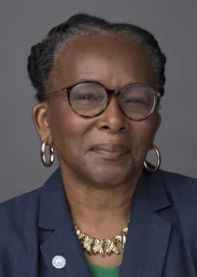Rochester’s Oldest Church, the Underground Railroad, and the Legacy of Slavery
- George Payne

- May 13
- 3 min read
Updated: May 16

It began with a piano recital.
One Friday afternoon, I attended a noonday concert inside the sanctuary of St. Luke and St. Simon Cyrene Episcopal Church, the oldest church building still standing in Rochester. Rachmaninoff and Schumann echoed through the Gothic nave, filling it with longing and beauty. The music stirred something in me, especially in a space that has witnessed not only centuries of worship but also the long, complex history of race in America.
After the recital, I stayed behind to take photos. That’s when an older parishioner noticed my camera and, seeing my curiosity, offered to show me a smaller chapel downstairs. As we chatted and I mentioned I was a freelance photojournalist, he asked — almost casually — if I knew the church had ties to the Underground Railroad.
I nodded.
Then came the moment that changed everything: “Would you like to see the passageway that freedom seekers used?”
Of course, I said yes.
He didn’t come with me, but he pointed the way and gave his blessing. I descended into the dim, cramped basement. It was humble — wooden stairs, low beams, and quiet shadows. I saw no polished exhibits, no tour group signs. But in one corner, a preserved sign from what looked like the 1950s read “Ash Wednesday & Good Friday.” It felt like time itself had slowed in that space. Later, Rev. Keith Patterson, the church’s current rector, told me the sign might be even older.
Back upstairs, Rev. Patterson invited me into the foyer and pointed out a plaque honoring Colonel Nathaniel Rochester, the church’s first alderman and the city’s namesake. As many Rochester residents know — and many more are just now learning — Nathaniel Rochester was also a slaveholder.
So I asked Rev. Patterson a direct question: How does the church deal with that legacy?
He answered without hesitation: “This church tells the truth.”
There’s no attempt to erase the past or offer excuses. That truth-telling, Rev. Patterson noted, is part of a broader reckoning across America. From Georgetown University to the White House, institutions that benefited from slavery have been called to acknowledge their histories. Churches are no exception. The Episcopal Church itself — like many denominations — was built on land and wealth tied to slavery.
This truth is not just historical; it is personal and communal. It touches Rochester’s neighborhoods, our city’s origin story, and the lives of our ancestors. And yet, St. Luke and St. Simon Cyrene stand as a powerful counter-narrative: a place where freedom seekers once hid, where Black worshippers built community, and where today’s congregation confronts its own contradictions.
For centuries, Christian churches were not neutral. They owned slaves, preached obedience to enslaved people, and used scripture to justify the trafficking of human beings. But Black Christians, both enslaved and free, used those same scriptures to fight for justice, resist oppression, and imagine liberation. This dual legacy is something Black churches, especially, have always wrestled with: holding onto faith while fighting the systems that tried to crush their humanity.
Today, scholars are lifting up the ways enslaved people used Christianity as a tool for survival, how they sought baptism to protect their families, and drew strength from spiritual teachings while confronting the brutality of bondage. At the same time, White Christians created new racial categories to reconcile slavery with their faith, birthing a theology of Whiteness that lingers to this day.
That day in the church, surrounded by music, memory, and unspoken truths, I felt the deep weight of history. St. Luke and St. Simon Cyrene is a sacred place. Not just because of its age or architecture, but because it holds stories: of those who built it, those who hid within it, and those who continue to worship and witness there.
What I didn’t get to ask Rev. Patterson — because he was called away — is whether the church might one day consider adding a fuller display next to the Nathaniel Rochester plaque. One that names not just the founder’s role in city politics but also his role in human bondage. One that tells the whole truth.
Because while a plaque offers a name and a date, a full display could offer context, pain, resistance, and hope. It could tell the story not just of a founder, but of a city — our city — still reckoning with the legacy of slavery.































“Love is not about sentimentality. Love is a decision to seek the good of the other, and sometimes that means letting go.”
— Adapted from teachings in the Episcopal Church’s Way of Love campaign